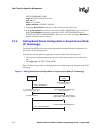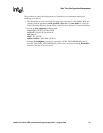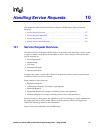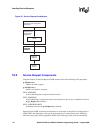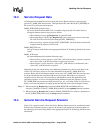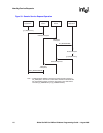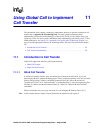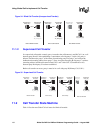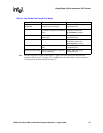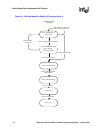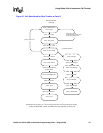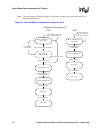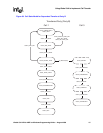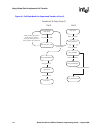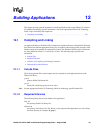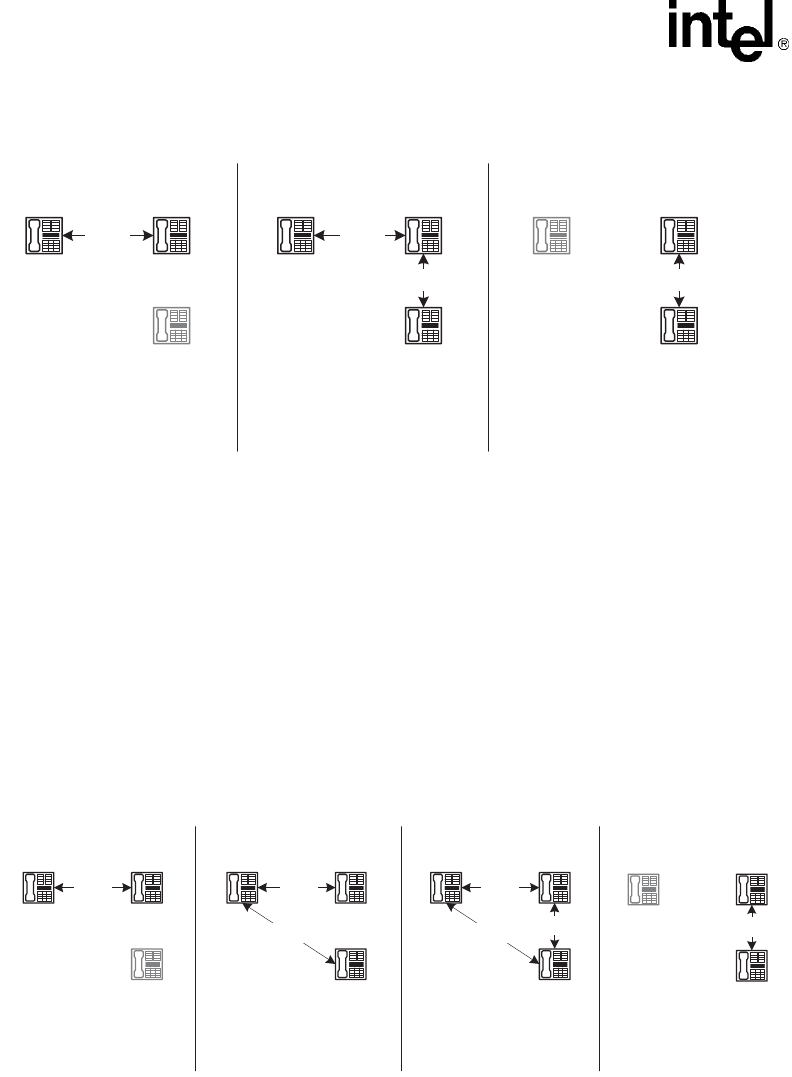
132 Global Call API for HMP on Windows Programming Guide — August 2006
Using Global Call to Implement Call Transfer
Figure 34. Blind Call Transfer (Unsupervised Transfer)
11.1.2 Supervised Call Transfer
In a supervised call transfer scenario, party A transfers the call between A and B (Call 1) to a call
between party B and C after establishing a consultation call with party C. In this call, party A
informs Transferred-to party C of the intent of transferring party B to party C and collects the
feedback and rerouting address from party C. Party A requests that party B dial party C’s address
(rerouting address) and then disconnect from Calls 1 and 2 after Call 3 (Transferred-to call)
between party B and party C has been established.
Before call transfer can occur, party A must be in a call with party B (Primary Call, Call 1).
Figure 35. Supervised Call Transfer
11.2 Call Transfer State Machine
Table 14 lists the new Global Call call states for blind call transfer.
Transferred_
To_Party (C)
Transferring
Party (A)
Transferred
Party (B)
Call 1
Before Blind Transfer
Transferring
Party (A)
Transferred
Party (B)
Transferred_
To_Party (C)
Call 1
Call 2
Transferring
Party (A)
Transferred
Party (B)
Call 2
Blind Call Transfer
After Blind Transfer
Transferred_
To_Party (C)
Transferred_
To_Party (C)
Transferring
Party (A)
Transferred
Party (B)
Call 1
Before Transfer
Transferring
Party (A)
Transferred
Party (B)
Transferred_
To_Party (C)
Call 1
Call 2
Transferring
Party (A)
Transferred
Party (B)
Call 3
Call 2 Setup
Call 3 Setup
Transferred_
To_Party (C)
Call 1
Call 2
Transferred
Party (B)
Call 3
After Call Transfer
Transferred_
To_Party (C)
Transferring
Party (A)



